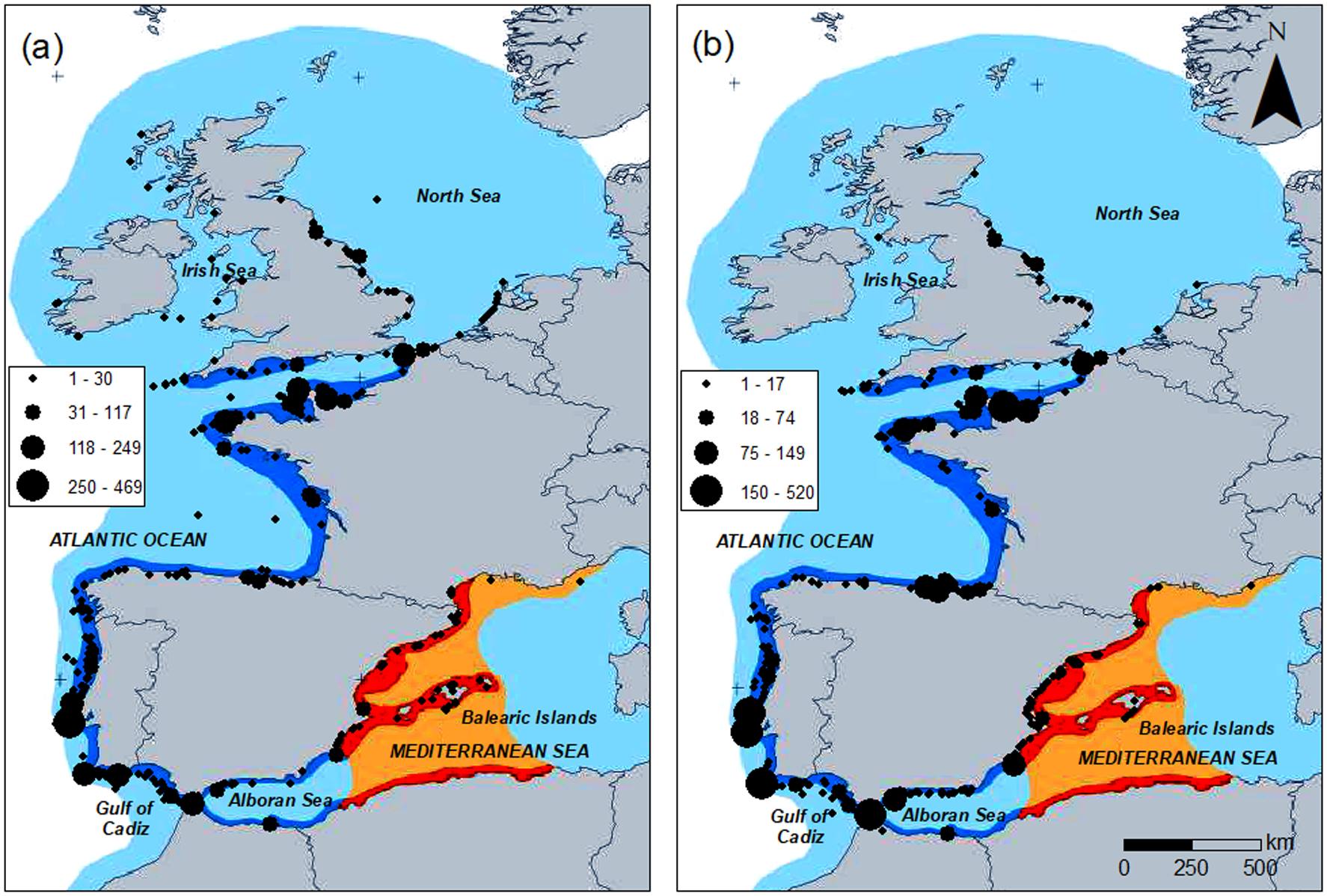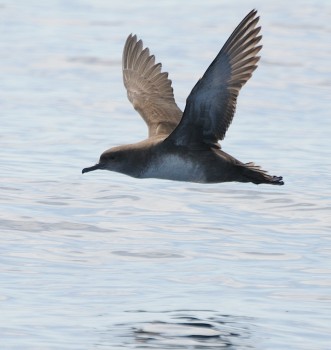
Spatial distribution of observations of Balearic Shearwaters. a) pre-breeding migration; b) post-breeding migration; Orange: breeding range, blue: non-breeding distribution
Beatriz Martín (Fundacio´n Migres, CIMA, Tarifa, Spain) and colleagues have published open access in the online journal PLoS ONE on studying migrating Critically Endangered Balearic Shearwaters Puffinus mauretanicus from data gathered by citizen science projects.
The paper’s abstract follows:
“Pelagic seabirds are elusive species which are difficult to observe, thus determining their spatial distribution during the migration period is a difficult task. Here we undertook the first long-term study on the distribution of migrating shearwaters from data gathered within the framework of citizen science projects. Specifically, we collected daily abundance (only abundance given presence) of Balearic shearwaters from 2005 to 2017 from the online databases Trektellen and eBird. We applied machine-learning techniques, specifically Random Forest regression models, to predict shearwater abundance during migration using 15 environmental predictors. We built separated models for pre-breeding and post-breeding migration. When evaluated for the total data sample, the models explained more than 52% of the variation in shearwater abundance. The models also showed good ability to predict shearwater distributions for both migration periods (correlation between observed and predicted abundance was about 70%). However, relative variable importance and variation among the models built with different training data subsamples differed between migration periods. Our results showed that data gathered in citizen science initiatives together with recently available high-resolution satellite imagery, can be successfully applied to describe the migratory spatio-temporal patterns of seabird species accurately. We show that a predictive modelling approach may offer a powerful and cost-effective tool for the long-term monitoring of the migratory patterns in sensitive marine species, as well as to identify at sea areas relevant for their protection. Modelling approaches can also be essential tools to detect the impacts of climate and other global changes in this and other species within the range of the training data.”

Balearic Shearwater at sea
Reference:
Martín, B., Onrubia, A., González-Arias, J. & Vicente-Vírseda, J.A. 2020. Citizen science for predicting spatio-temporal patterns in seabird abundance during migration. PLoS ONE 15(8). doi.org/10.1371/journal.pone.0236631.
John Cooper, ACAP Information Officer, 02 September 2020

 Français
Français  English
English  Español
Español